The Rail Delivery Group (RDG) is the British rail industry membership body that brings together passenger and freight rail companies, Network Rail and High Speed 2.
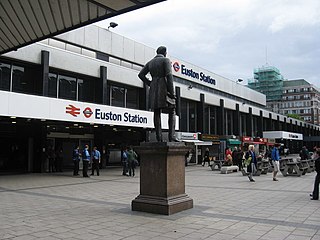
The London station group is a group of 18 railway stations served by the National Rail network in central London. Most are terminal stations, either serving major national services or local commuter routes. A small number are through-stations that are considered terminals for ticketing purposes. All current stations in the group fall within London fare zone 1. A ticket marked "London Terminals" allows travel to any station in the group via any permitted route, as determined by the National Routeing Guide.
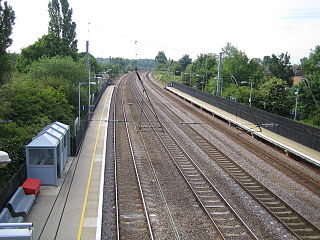
Welham Green railway station serves the village of Welham Green in Hertfordshire, England. It is 15 miles 50 chains (25.1 km) measured from King's Cross on the East Coast Main Line.

The Shere SMART is a desktop-based railway ticket issuing system, developed by the Guildford-based company Shere Ltd, utilising Newbury Data ND4020 ticket printer, first introduced in Britain in 2003. Since the first trial installation of the system in the ticket office at London Bridge station, approximately 300 terminals have been installed at stations on the Southern and former Thameslink networks.

Tickets issued from British Rail's APTIS system had a considerable amount of detail, presented in a consistent, standard format. The design for all tickets was created by Colin Goodall. This format has formed the basis for all subsequent ticket issuing systems introduced on the railway network – ticket-office based, self-service and conductor-operated machines alike.
In the ticketing system of the British rail network, tickets are normally issued to and from individual stations. In some instances, when there is more than one station in a town or other locality—especially where these are on different routes—it may be desirable for passengers to be able to travel to one station and back from another, or more generally to be able to choose which of the stations they wish to travel to. To accommodate this requirement, British Rail introduced a series of station groups: notional "common locations" to which tickets from stations outside that group would be issued.

The Network Railcard is a discount card introduced in 1986 by British Rail, upon the creation of their Network SouthEast sector in parts of Southern England.
There is no single 'discount railcard' available on the UK railway network. In addition to the large number and variety of short-term or localised promotional fares that have been available to passengers on the British railway network in recent decades, there are many permanent concessionary fare schemes available to passengers. Some of these take the form of Railcards, which can be purchased by people who qualify according to the conditions, and which give discounts for all journeys over a period; other concessions are available for individual journeys. In all cases, details of the type of concession will be printed on the passenger's travel ticket, to distinguish reduced-rate tickets from those sold at the standard full fare.
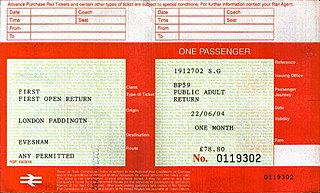
AJENTS is one of the two original computer-based railway ticket issuing systems supplied to travel agencies in Britain. It allows agencies which are not connected to one of the major GDS networks to issue and print railway tickets from a standard personal computer, and submit revenue and accounting data securely to Rail Settlement Plan Ltd for allocation to the appropriate Train Operating Companies.
The Scheidt & Bachmann Ticket XPress system is a passenger-operated self-service railway ticket issuing system developed and manufactured by the German systems development and production group Scheidt & Bachmann GmbH, based in the city of Mönchengladbach. Since the first trial installations in 2003, seven train operating companies (TOCs) in Great Britain have adopted the system as their main passenger-operated ticket vending method, while four others have installed machines at certain stations on their networks. More than 1,500 machines are in place across the country, and more than 850 stations have one or more. Machines can accept cash and/or payment cards and can sell most National Rail tickets.

The 16–25 Railcard is an annual card giving discounts on certain types of railway ticket in Britain. It is available to anybody aged between 16 and 25 (inclusive), and certain mature students aged 26 and above, and is currently priced at £30.00. There is no restriction on the number of times the Railcard can be used to purchase discounted tickets during the period of its validity, and there are no geographical restrictions on its use.

The Edmondson railway ticket was a system for recording the payment of railway fares and accounting for the revenue raised, introduced in the 1840s. It is named after its inventor, Thomas Edmondson, a trained cabinet maker, who became a station master on the Newcastle and Carlisle Railway in England.

An airline ticket is a document or electronic record, issued by an airline or a travel agency, that confirms that an individual is entitled to a seat on a flight on an aircraft. The airline ticket may be one of two types: a paper ticket, which comprises coupons or vouchers; and an electronic ticket.

The Senior Railcard is an annual card available to people aged 60 and over, which gives discounts on certain types of railway ticket in Britain. The Railcard has existed in various forms since 1975; the current version is priced at £30.00 and is valid for one year, with a 3-year card available for £70. It is one of a wide variety of discounted and concessionary fare schemes available on Britain's railway network.
The Family and Friends Railcard is an annual rail travel discount card for use in Great Britain by adults travelling with at least one child. Cards valid for either one or three years can be purchased at a cost of £30 for one year or £70 for three. It is one of the discounted and concessionary fare schemes available on Britain's railway network to people who either belong to particular groups or who are willing to buy tickets ahead of the date of travel. Before 18 May 2008 it was known as the Family Railcard, but the name was changed to reflect the fact that discounted travel is not restricted to adults and children who are related.
Meadowbank Stadium railway station was opened on 14 June 1986 by British Rail next to Meadowbank Stadium in Edinburgh to allow spectators to travel to the 1986 Commonwealth Games that were being held at the stadium. A shuttle service ran from Edinburgh Waverley: at most times this consisted of a single train running at 20–30 minute intervals, but at times of high demand a second train was used and frequencies were higher. These operated from platforms 20 and 21 at Edinburgh Waverley, and a temporary ticket office nearby was the only outlet at which tickets could be bought. Special pre-printed Edmondson tickets were issued at a flat fare of £0.50.
A fare basis code is an alphabetic or alpha-numeric code used by airlines to identify a fare type and allow airline staff and travel agents to find the rules applicable to that fare. Although airlines now set their own fare basis codes, there are some patterns that have evolved over the years and may still be in use.
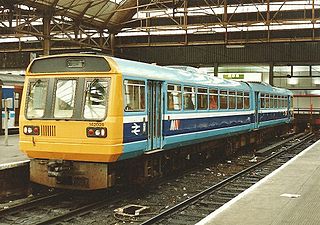
Network NorthWest was a brand name of British Rail which was applied for a short period to the provincial railway network in North West England. It was launched in 1989 during British Rail's sectorisation programme which created distinct brand identities for regional sub-divisions.
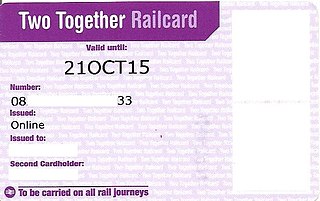
The Two Together Railcard is a scheme which gives discounts on certain types of railway ticket in Britain. Launched nationally in 2014 after a successful trial in 2011–12, it was the first new Railcard scheme since the 1980s. It is available to any two named individuals aged 16 or over and is priced at £30.00. There is no restriction on the number of times the Railcard can be used to purchase discounted tickets during the period of its validity, and there are no geographical restrictions on its use.

Ticketer is the brand name for a range of electronic ticket machines provided by British company Corvia Ltd, primarily for usage on buses. The "innovative" cloud-based system, first marketed on a small scale in 2008, has since developed into a rival to the three major ticket issuing systems used by bus companies throughout Britain.













